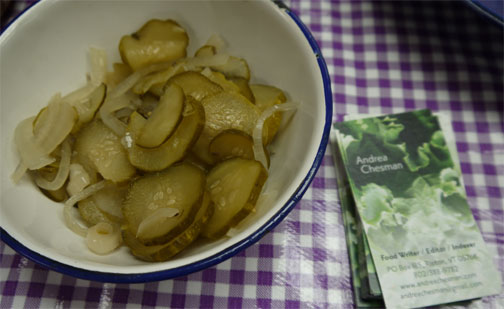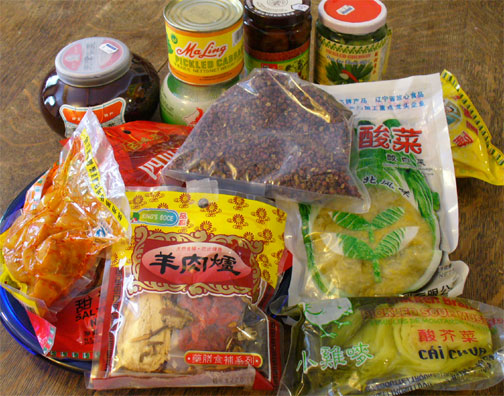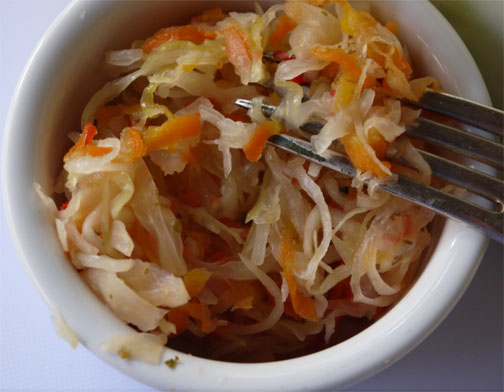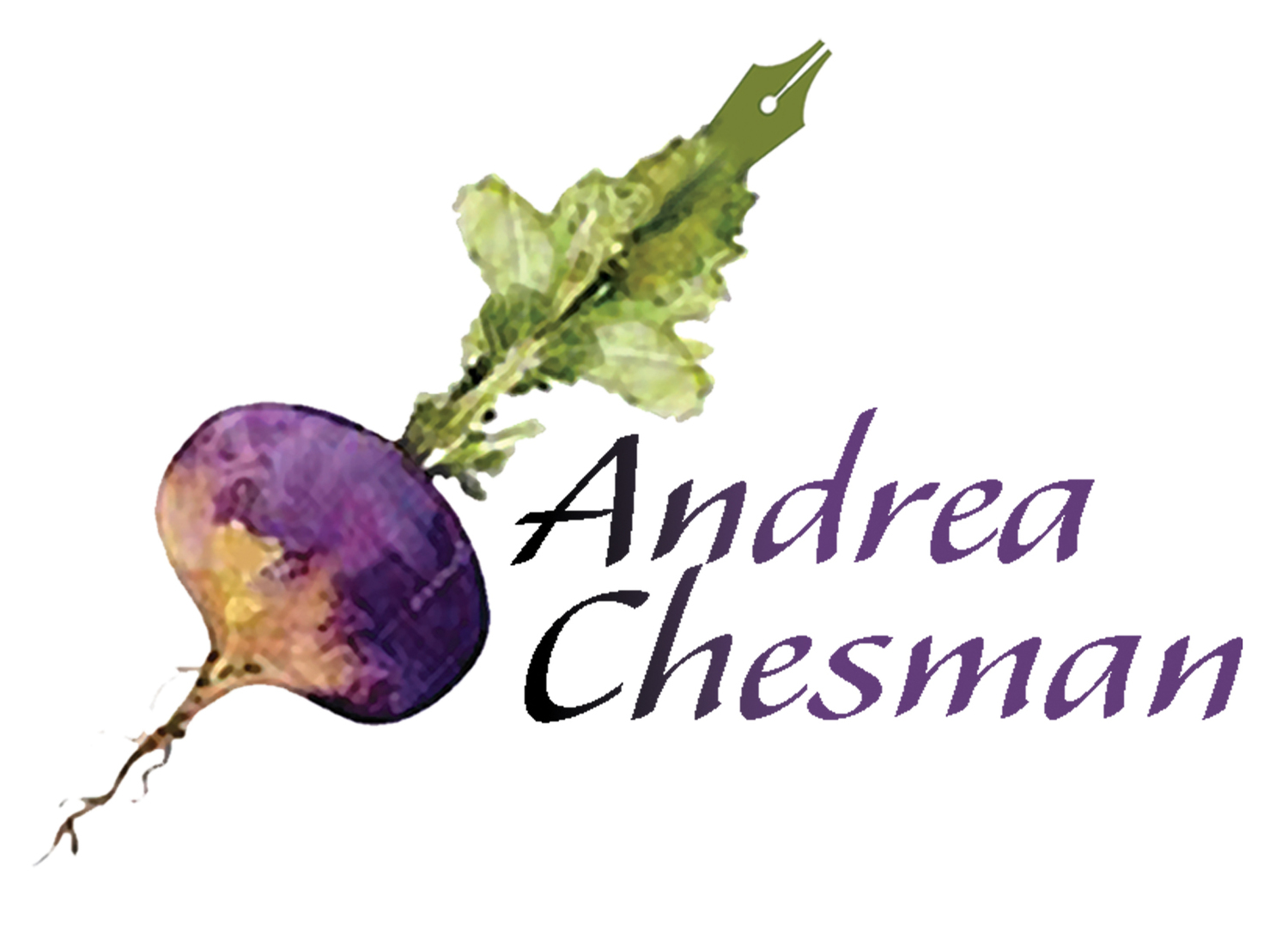 Part of my show on the road. These are Dill Chips
Part of my show on the road. These are Dill Chips
People who want to promote their cookbooks must bring samples with them of foods to taste. (One envies the novelists who simply have to read from their works.) But bring pickles I do. For most of the summer I have brought my No-Fail Half-Sour Pickles (see post, June 8), not the least because it is a no-fail recipe. It also makes a darn fine pickle. But now that it is fall my attention turns to recipes utilizing cabbages, carrots, and daikon radish.
When I take my show on the road, I find myself explaining why I wrote another book on making pickles when my 1983 book, Pickles and Relishes, still sells well and contains some very fine recipes. (Hopefully, I recycled all the good ones in the new book—or at least all the favorites). Pickles haven’t changed over the years, but our interest in pickles have. For every pickler who just wants recipes to deal with garden excess, there are picklers who are interested in exploring traditional ways vegetables and fruits are pickled in other cuisines.
 On a pickle trip to Montreal's Chinatown, I loaded up my cart with mysterious looking pickled vegetables—all research for The Pickled Pantry
On a pickle trip to Montreal's Chinatown, I loaded up my cart with mysterious looking pickled vegetables—all research for The Pickled Pantry
Curtido is my favorite pickle of the moment. It is called the Salvadoran version of sauerkraut but the flavor profile is so different that calling it “sauerkraut” does not do it justice. Curtido is a lightly fermented cabbage and flavored with onion and oregano. It is the traditional Salvadoran accompaniment to pupusas, which are cheese- or meat-stuffed pancakes made from masa harina (the same dough from which torillas and tamales are made). Not surprisingly, curtido makes a great topping for fish tacos – it also makes a wonderful salad.
 A bowl of Curtido
A bowl of Curtido
Curtido
Makes 1 1/2 to 2 quarts
2 pounds green cabbage (1 small to medium head), cored and grated or thinly sliced
2 carrots, grated
1 onion, thinly sliced
2 fresh red or green jalapeños, seeded and finely chopped
2 teaspoons pickling or fine salt
2 teaspoons dried oregano (preferably Mexican)
Optional Brine
1 teaspoon pickling or fine sea salt
1 cup water
1. Combine the cabbage, carrots, onion, and jalapeños in a large bowl. Add the salt and mix well. Let stand for 30 minutes.
2. Using a potato masher or your fists, pound and press the vegetables until they release their liquid and are quite wet. Add the oregano and toss to distribute. Pack the mixture tightly into one or two clean quart canning jars or crocks, tamping down on the vegetables with a wooden dowel or your fingertips with as much force as you can until the level of liquid rises above the vegetables.
3. If the vegetables do not make enough liquid to cover the vegetables, add the optional brine. To make the brine, combine the salt and water. Heat until the salt dissolves. Let cool to room temperature before adding to the jar; you should not need more than a couple of tablespoons, but it depends on the surface area of your container.
4. Weight the vegetables to keep them submerged. Cover the jar to exclude air. Set the jar where the temperature remains constant; 65° to 75°F is ideal. Let ferment for 2 to 3 days. Taste; when pleasingly sour, refrigerate.

